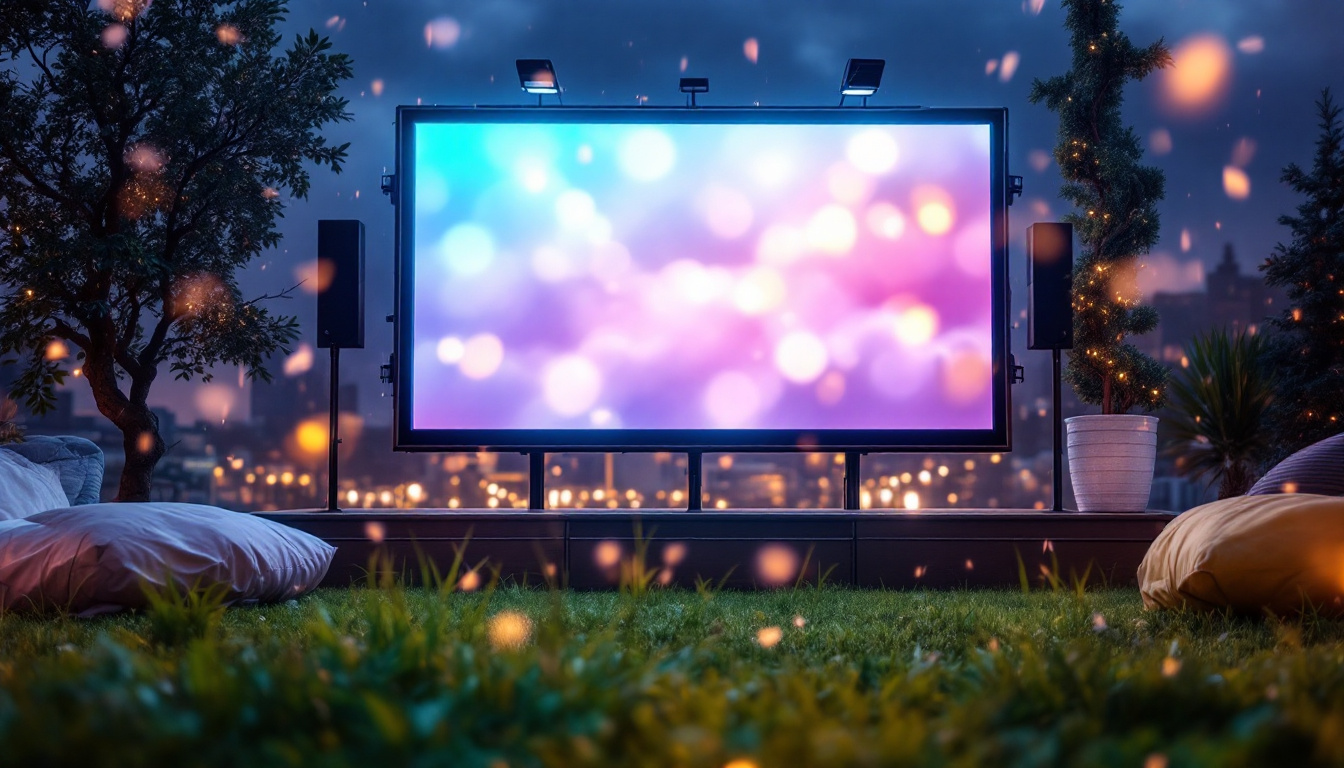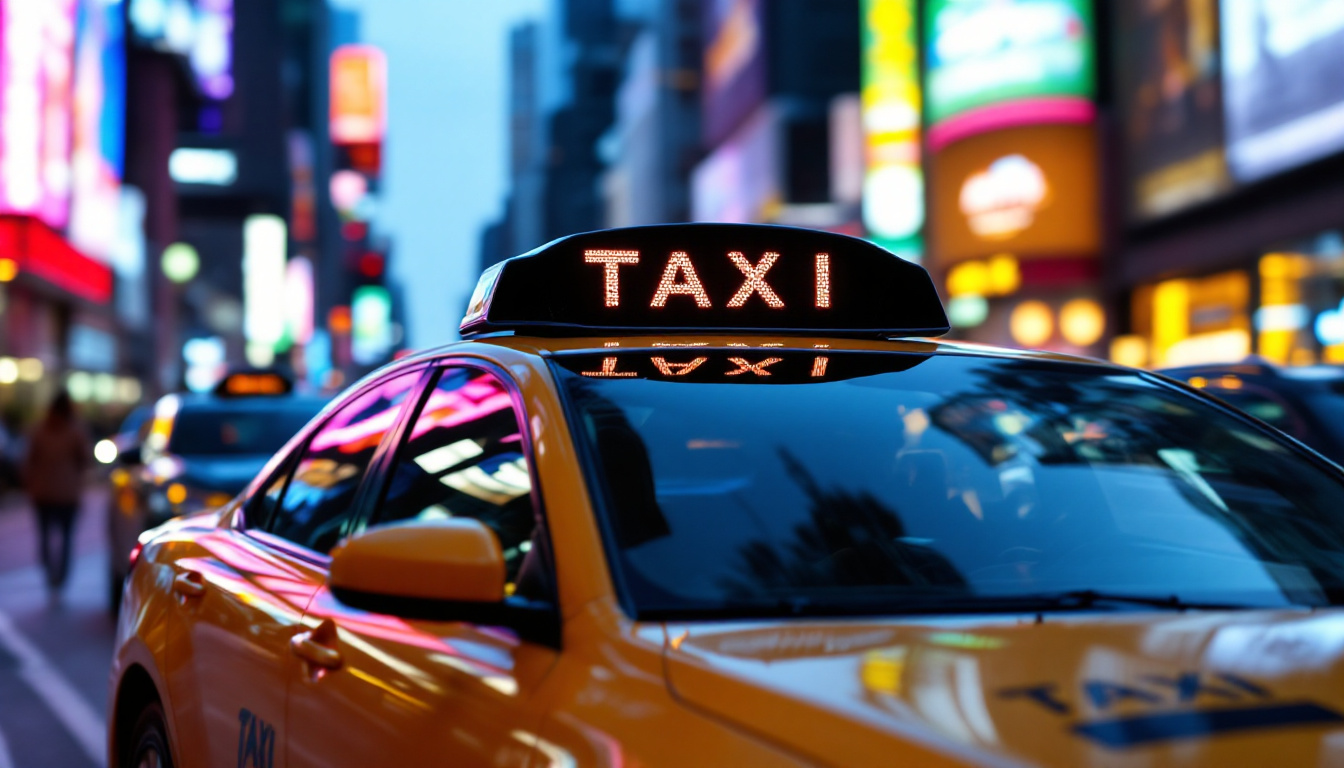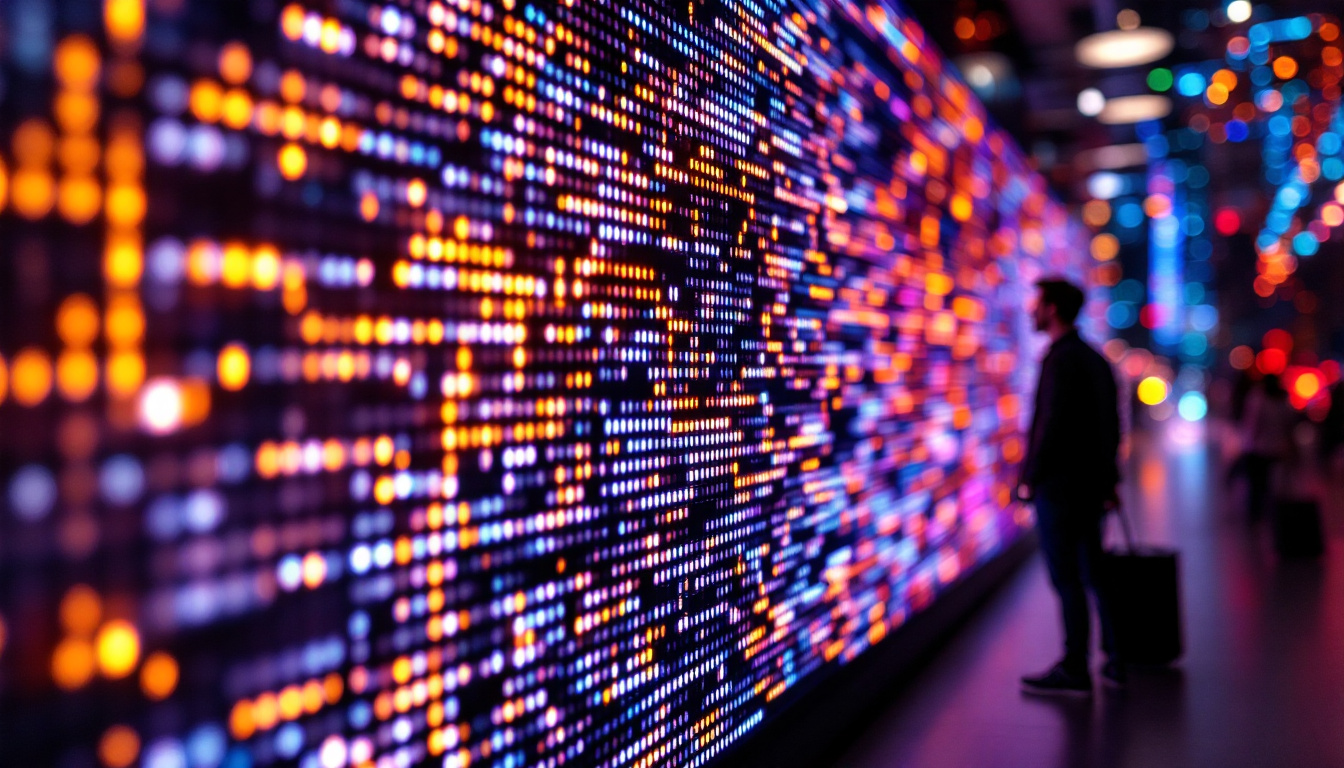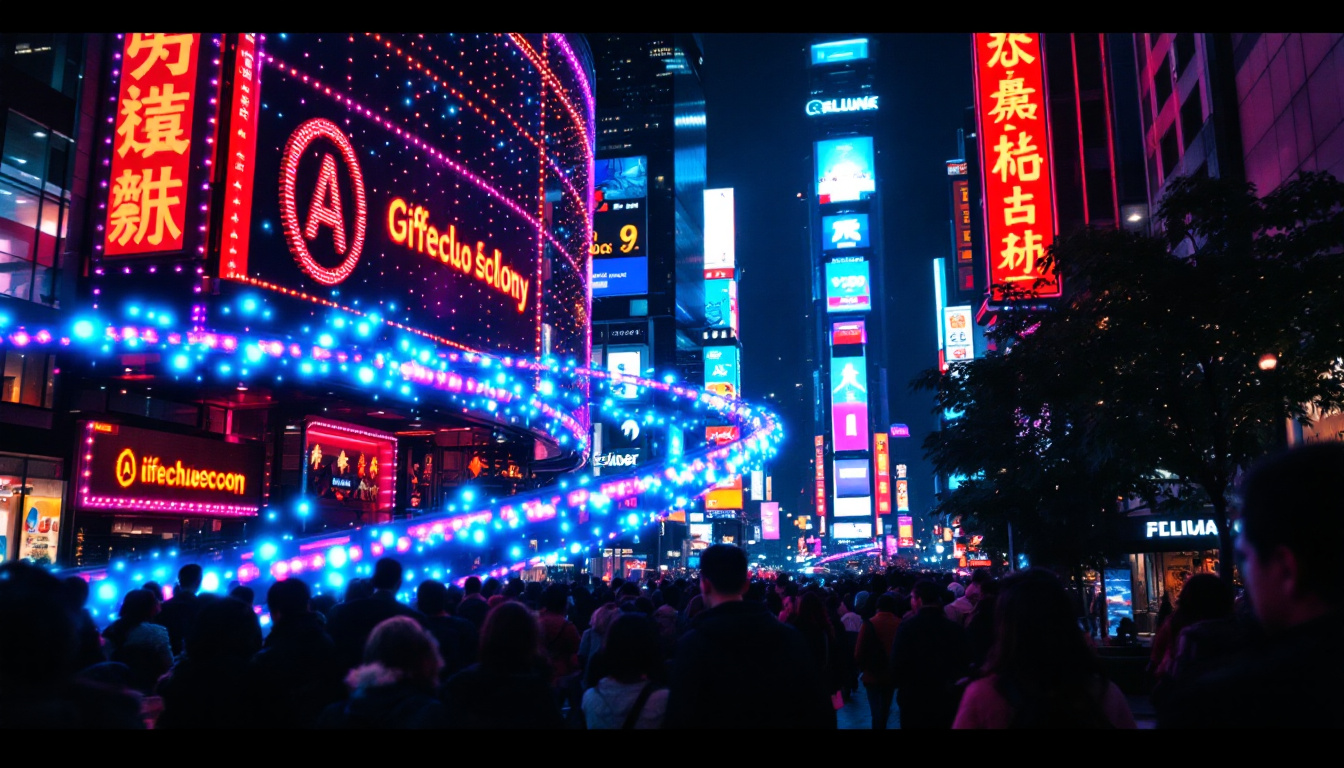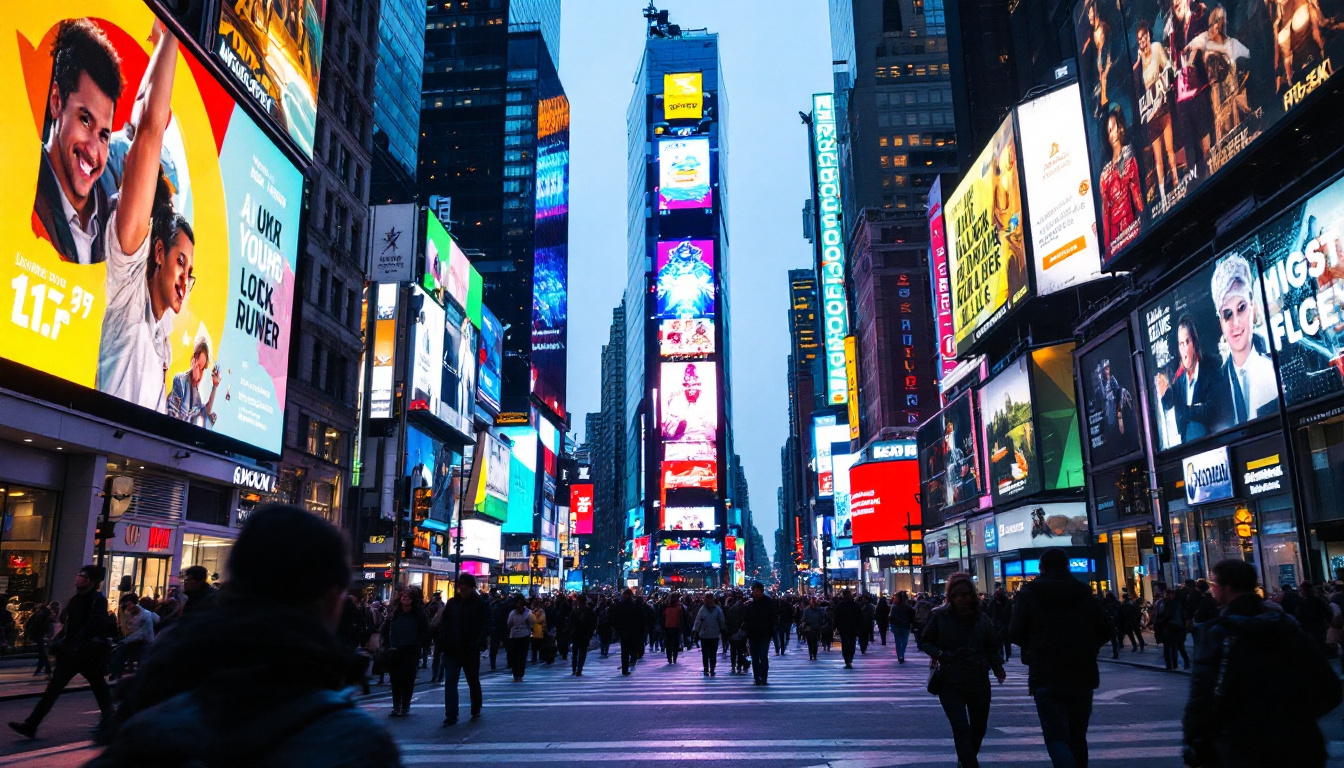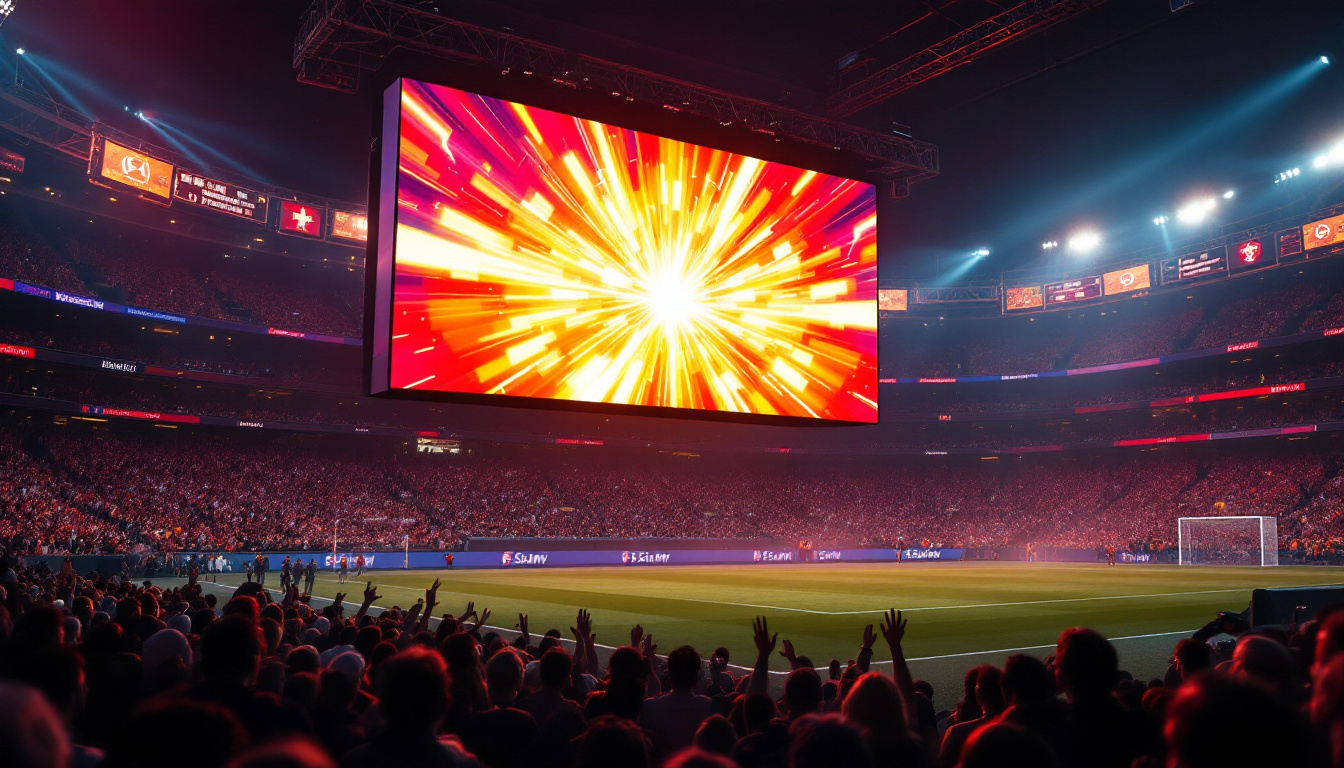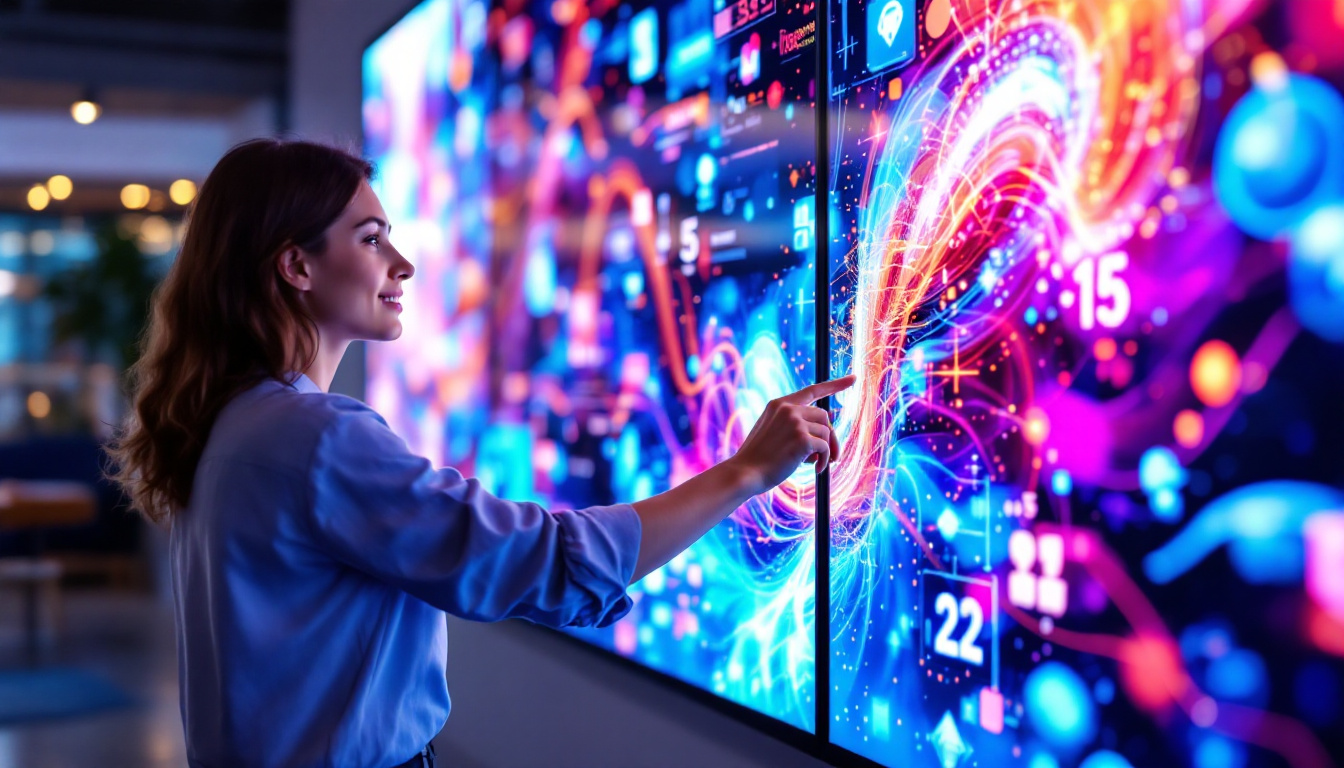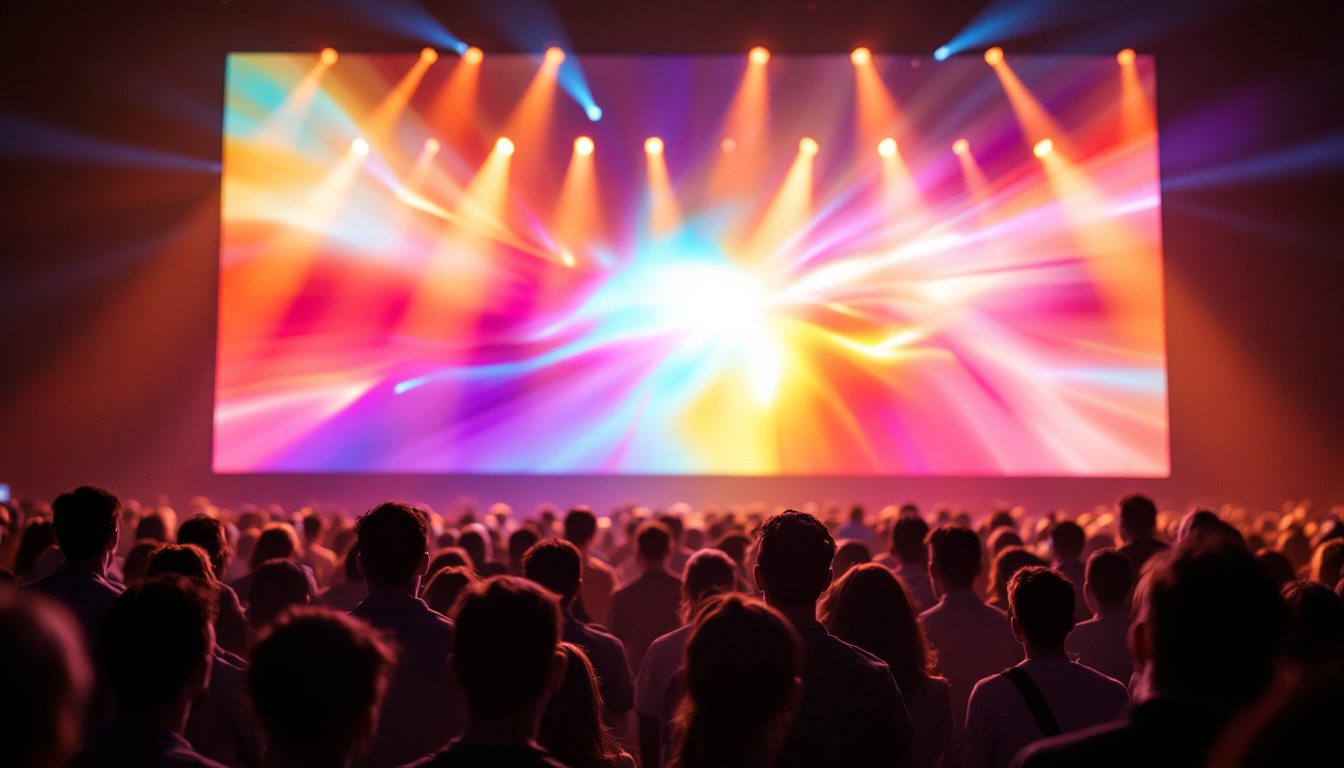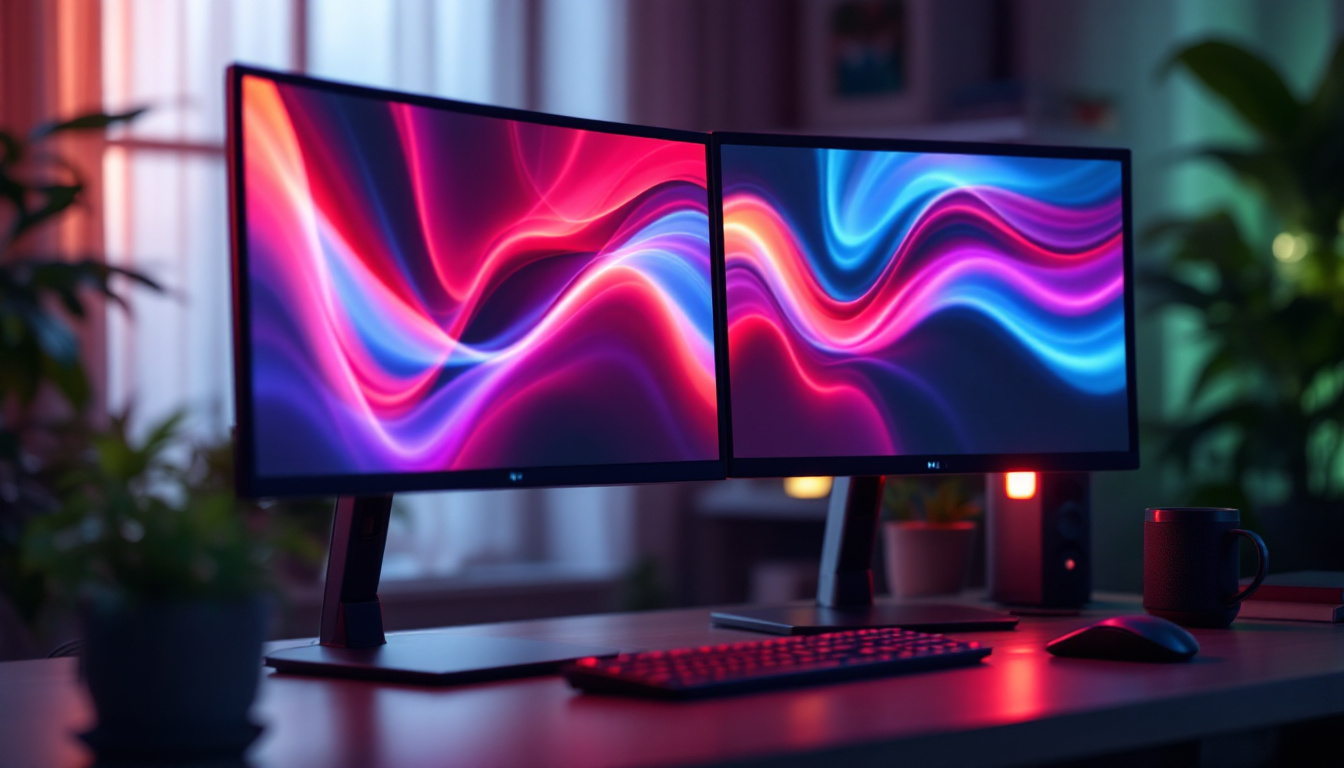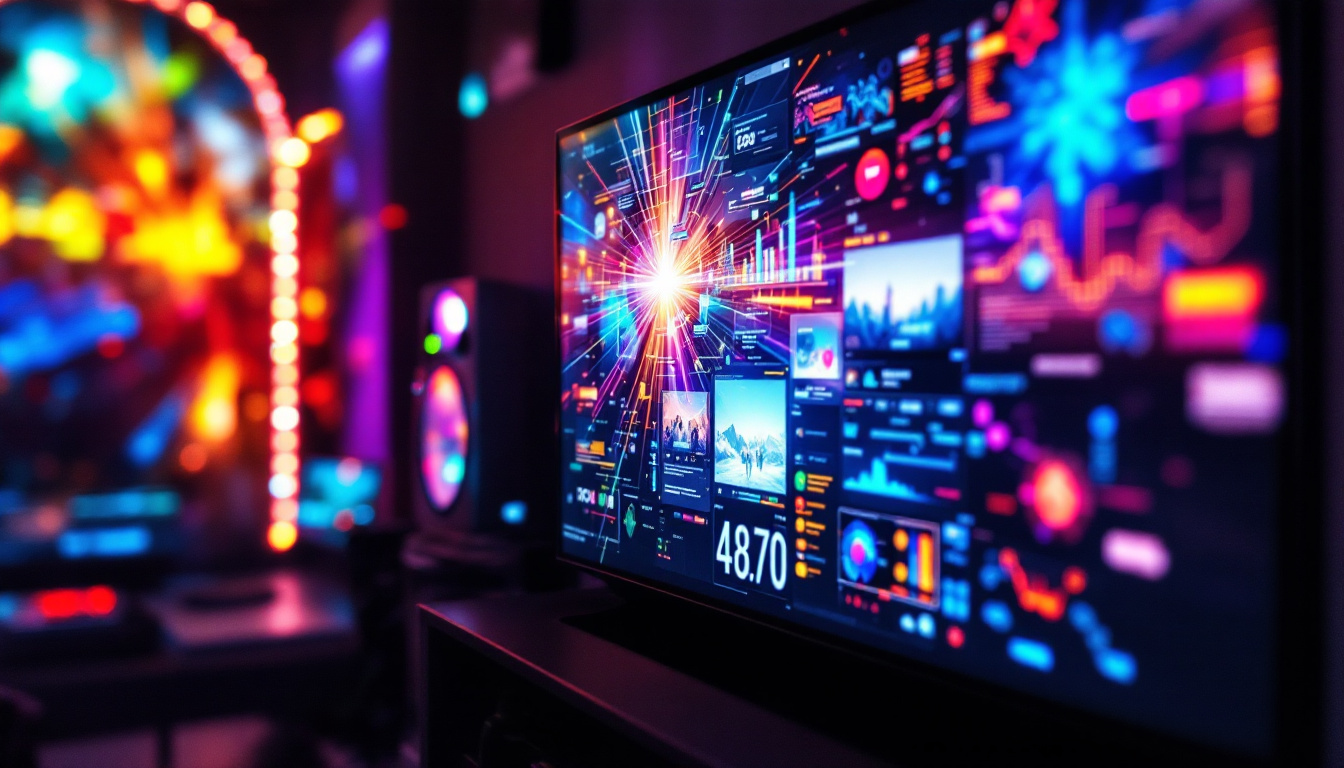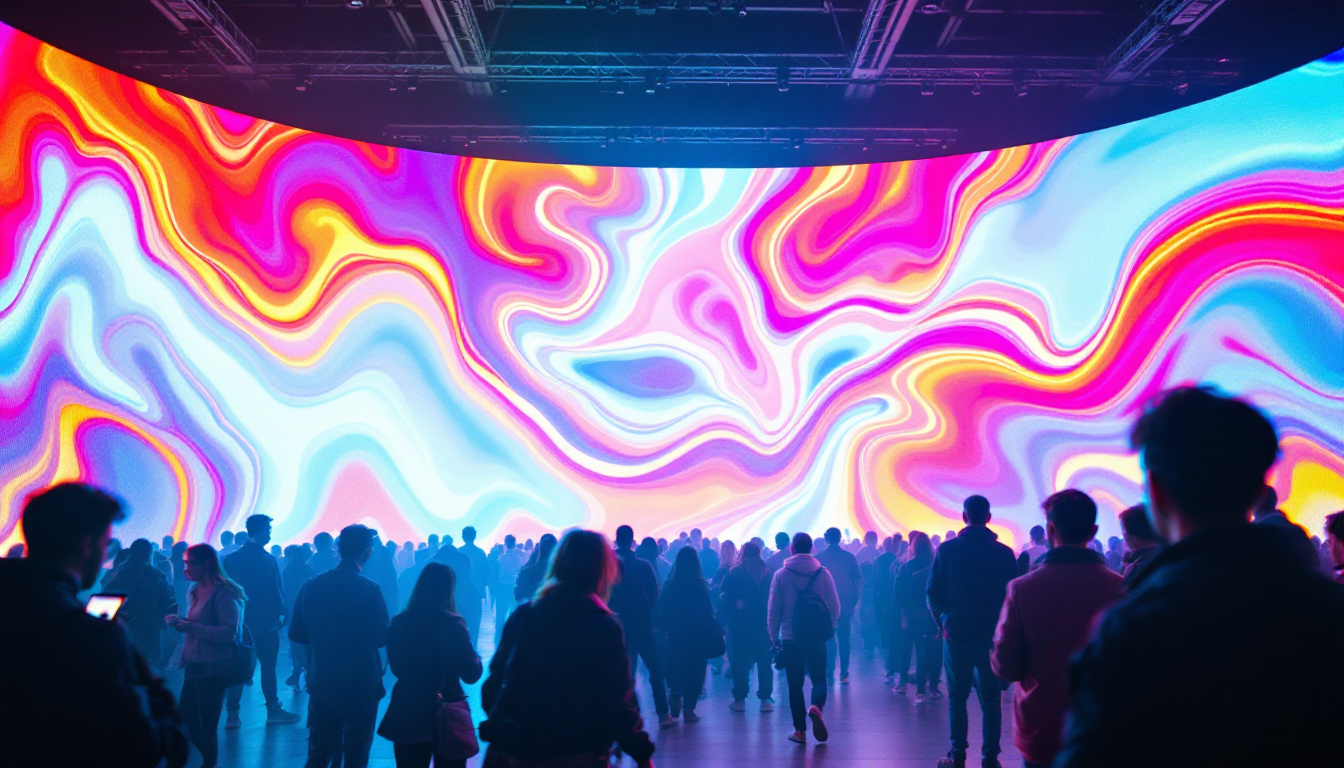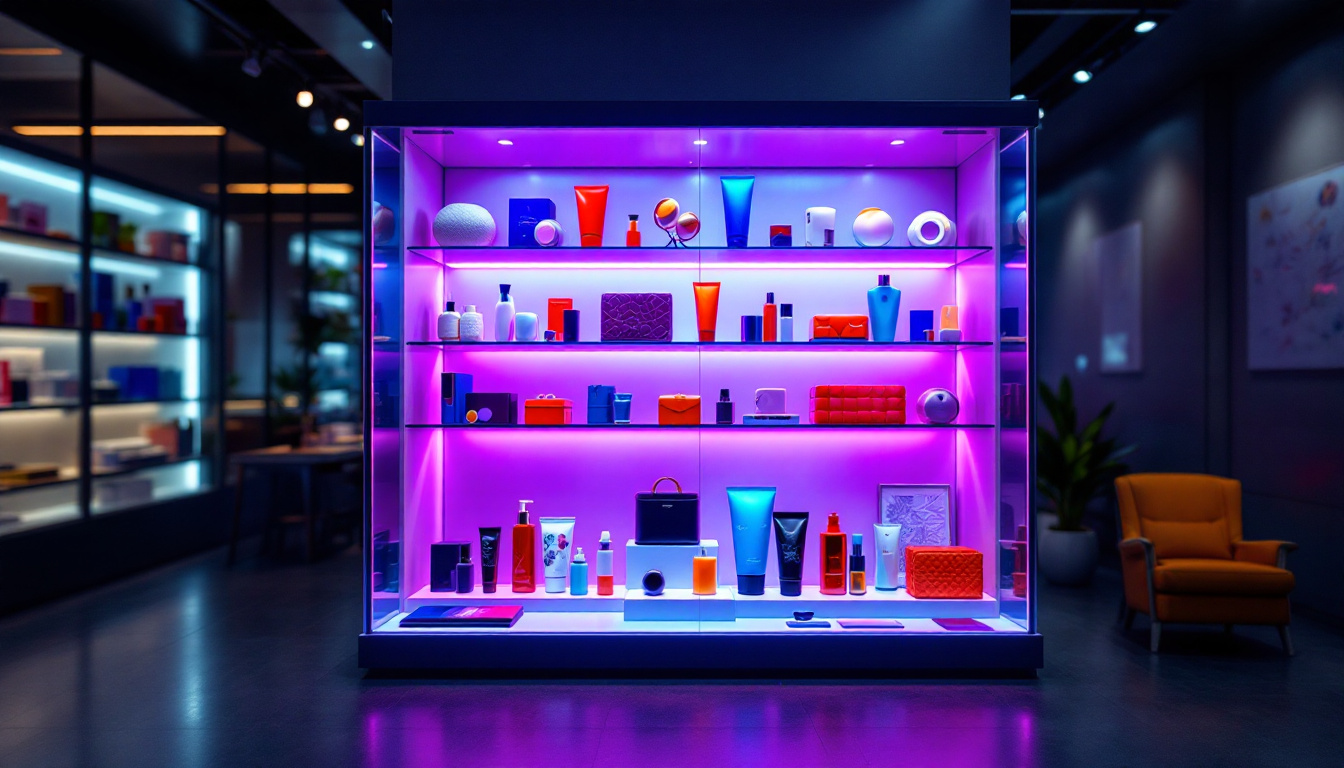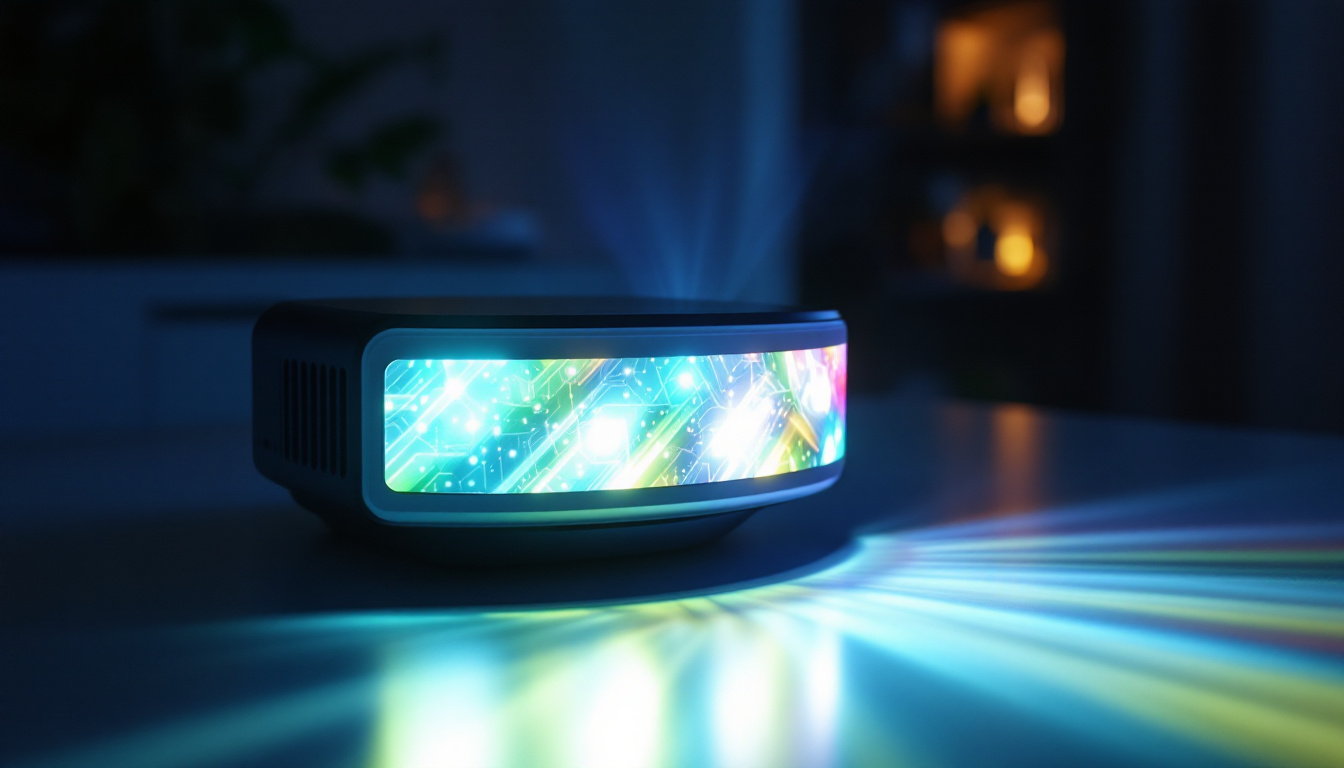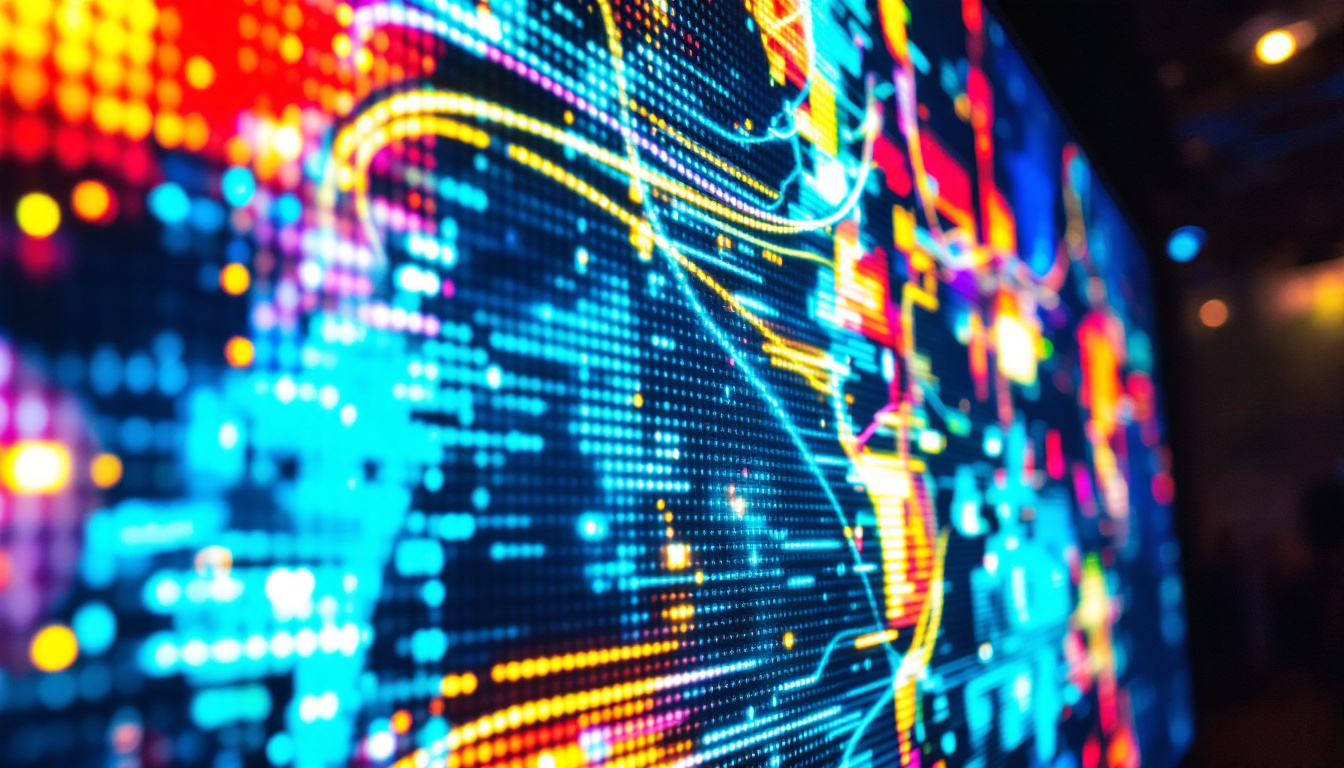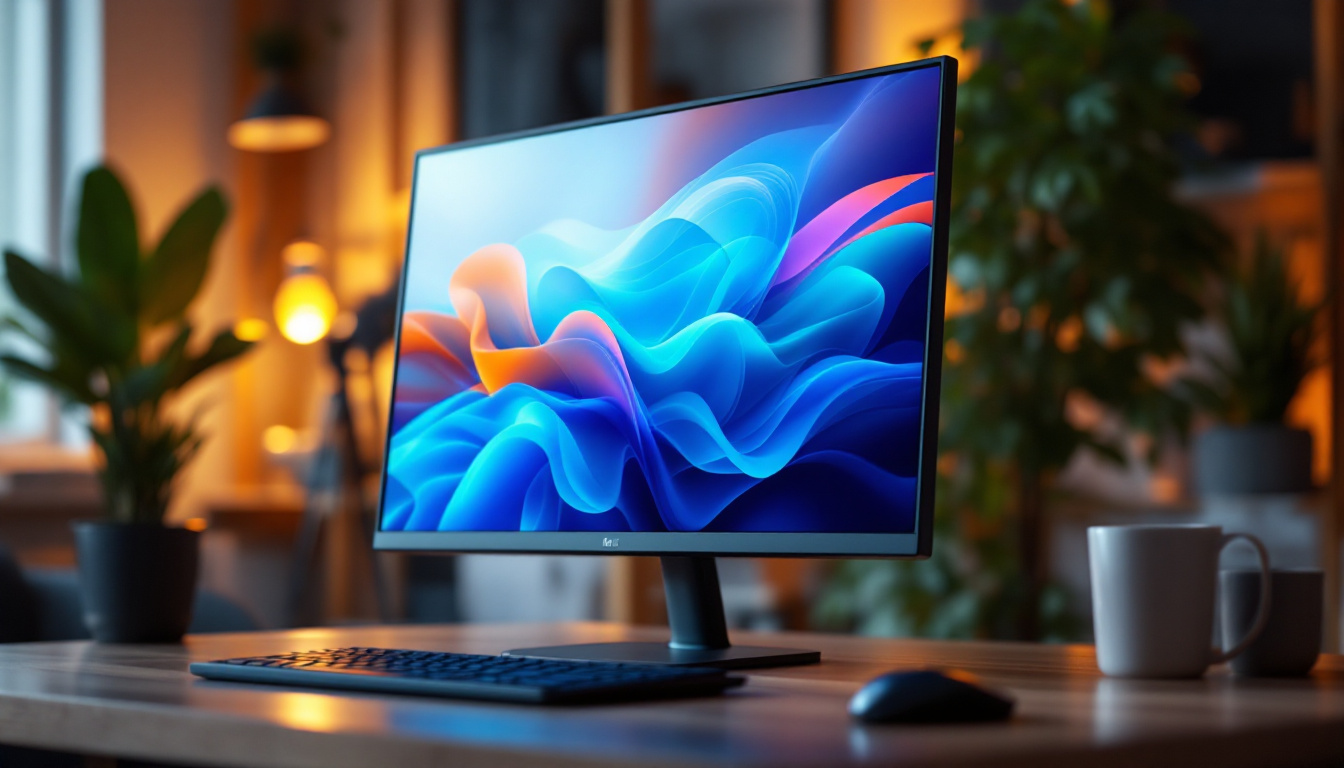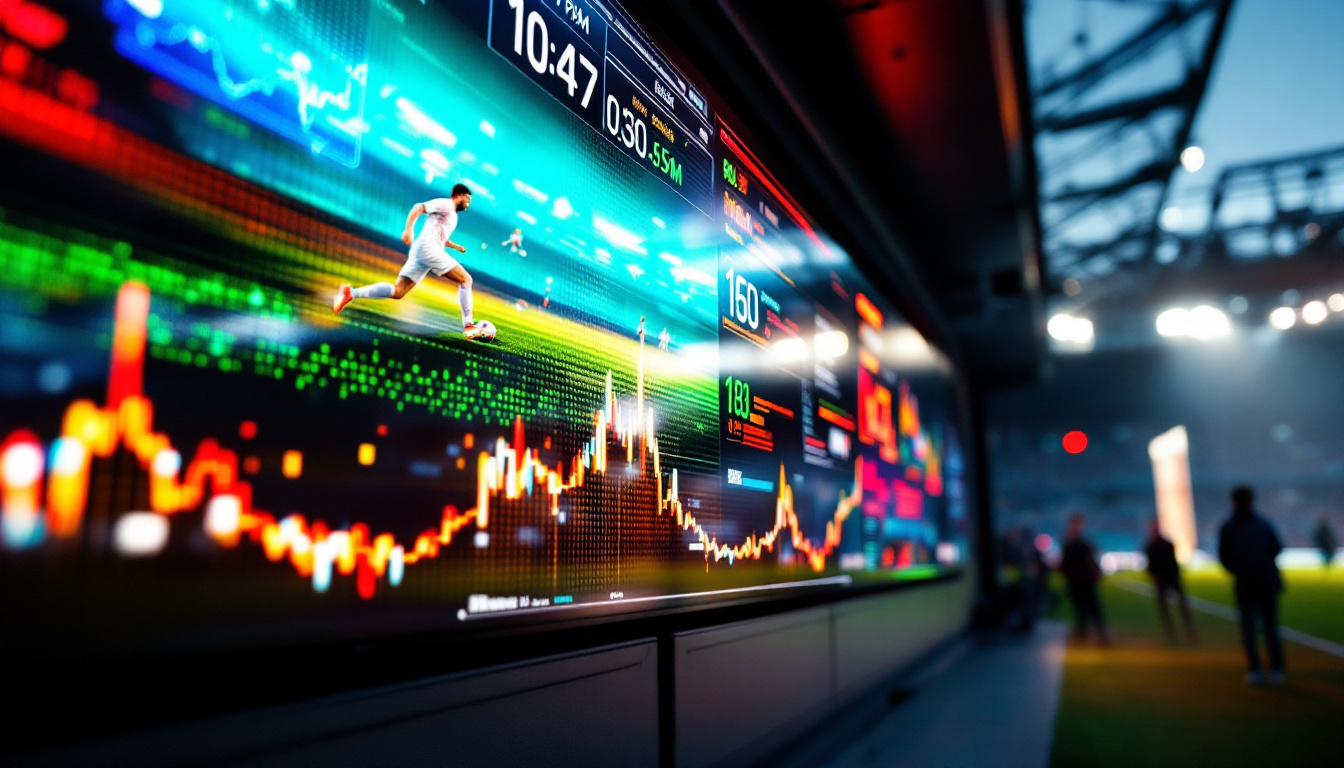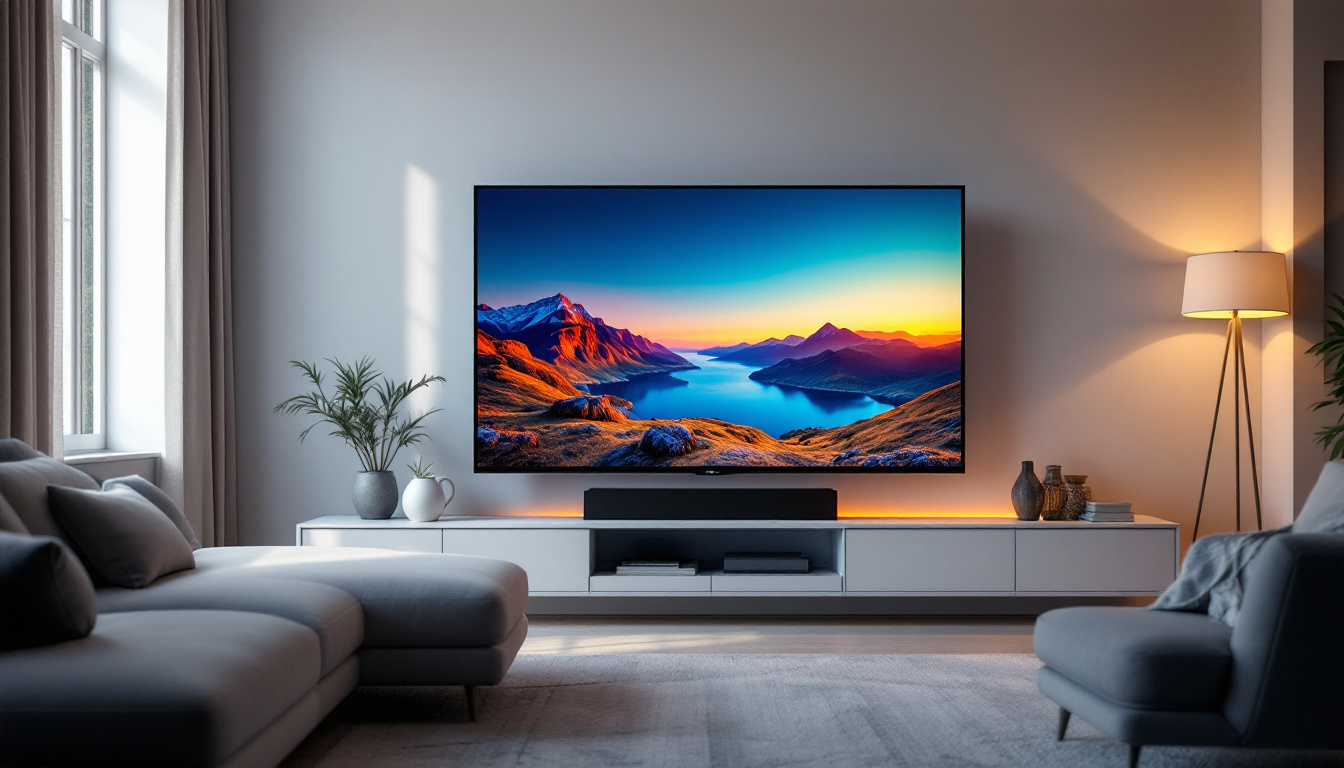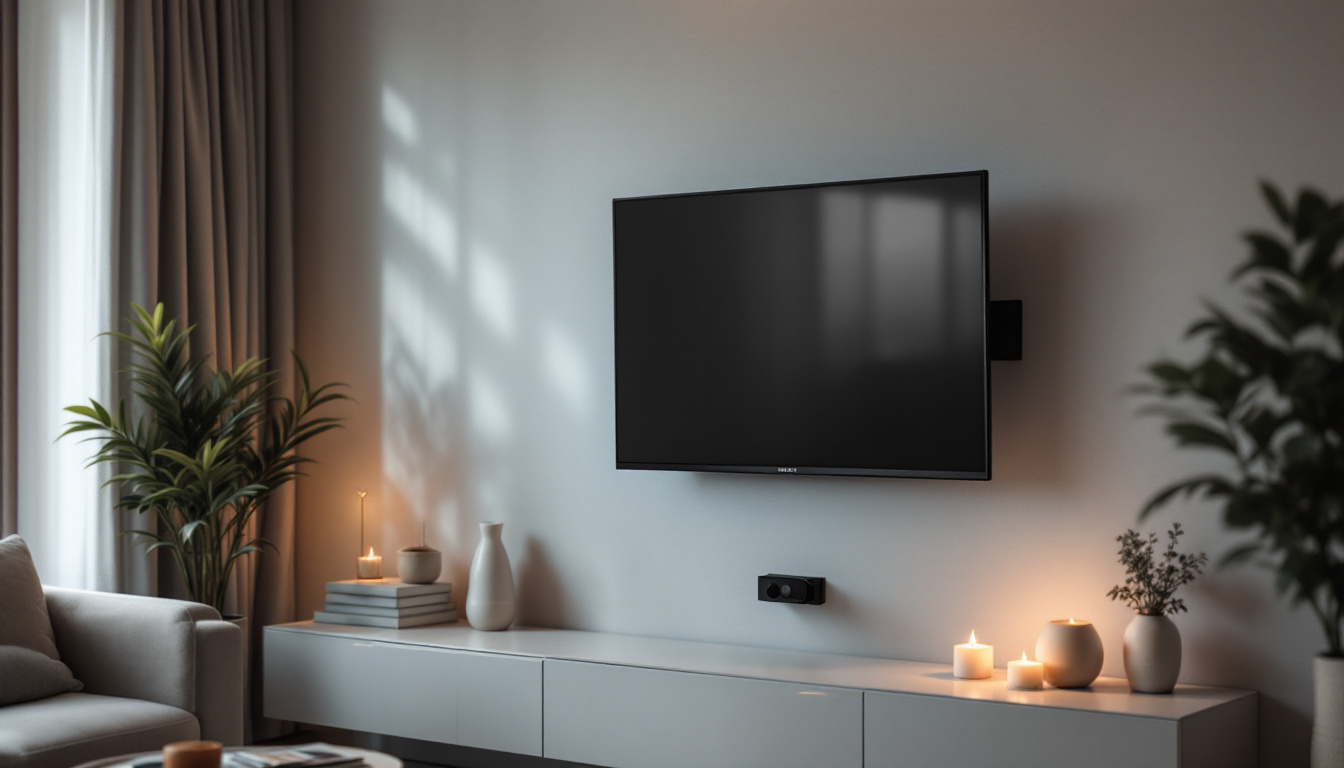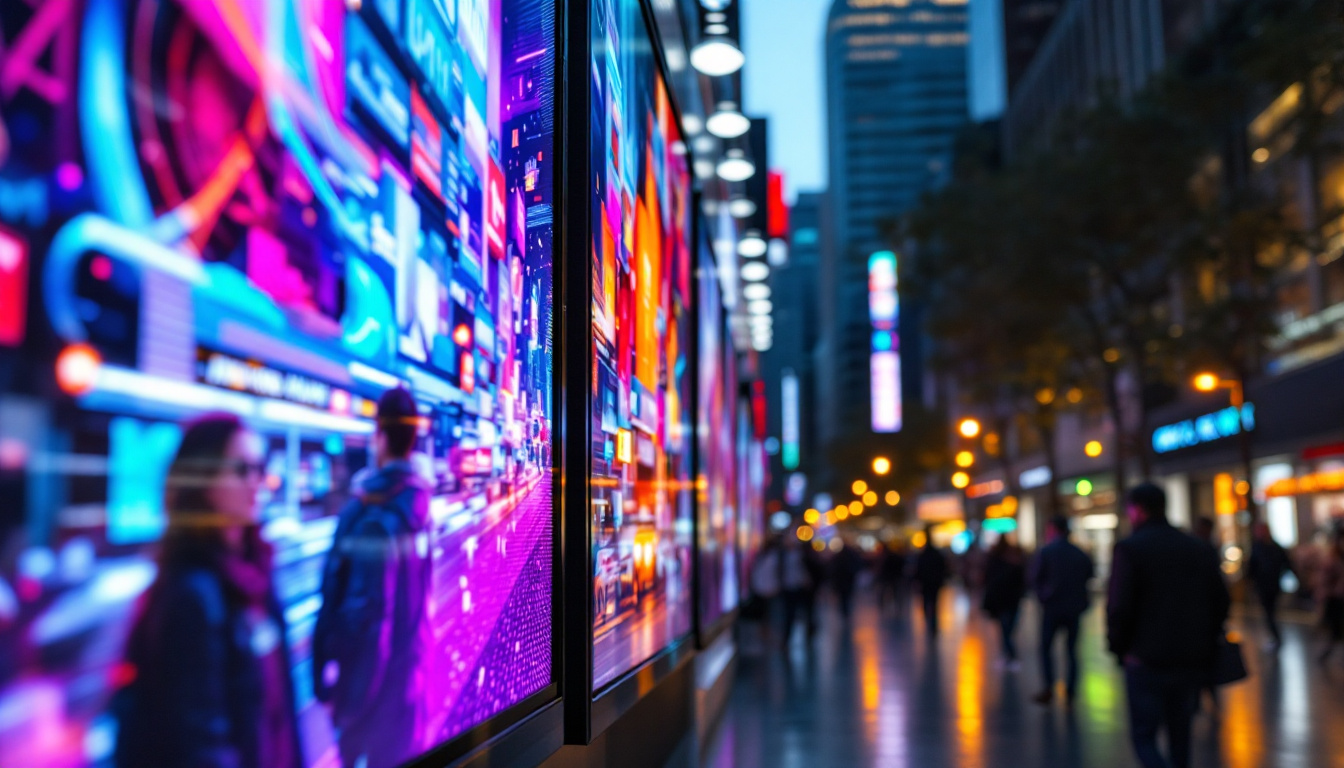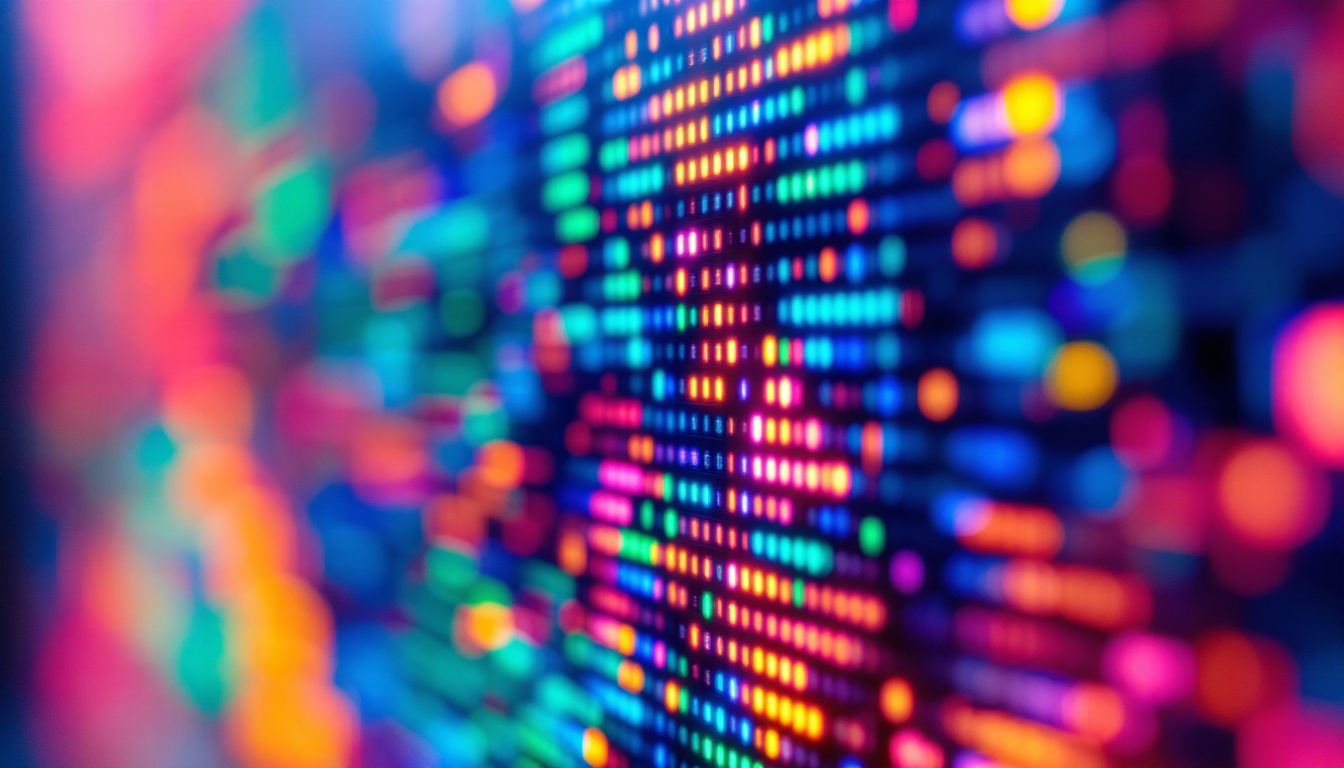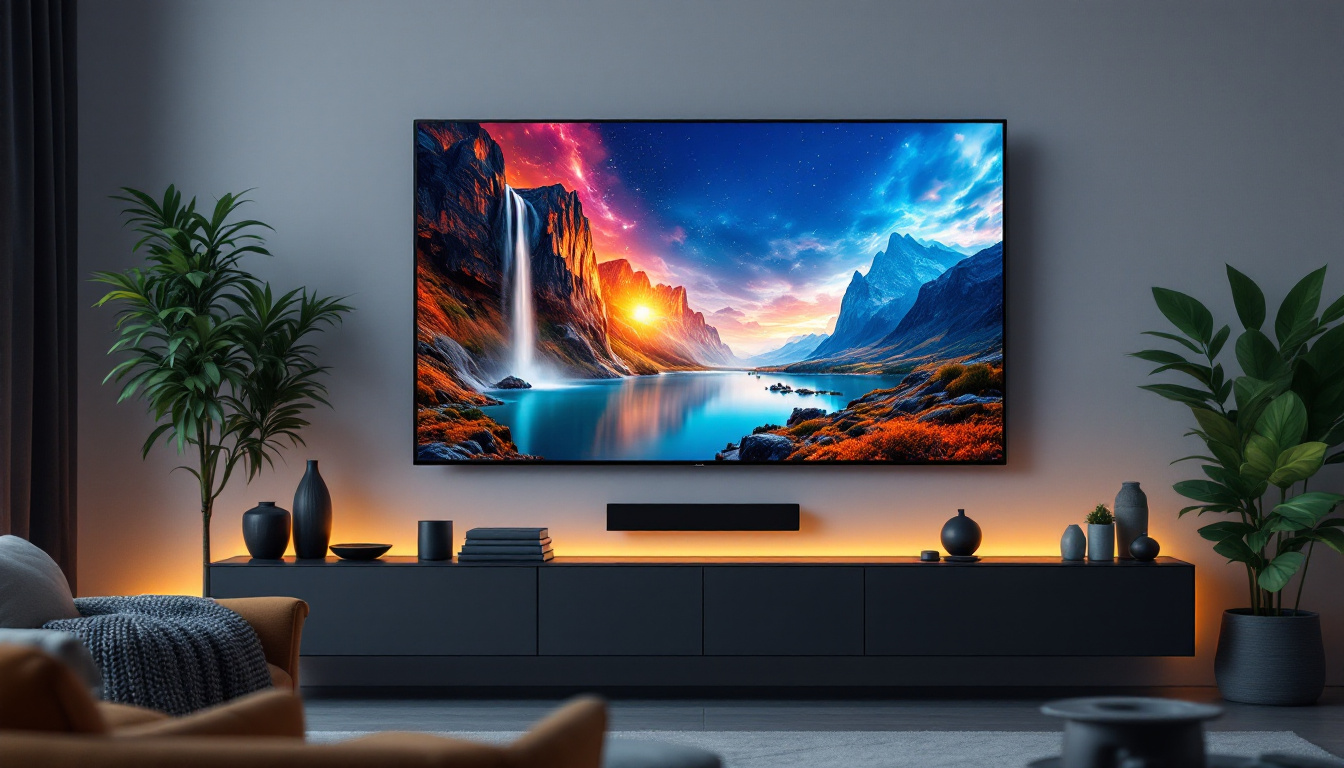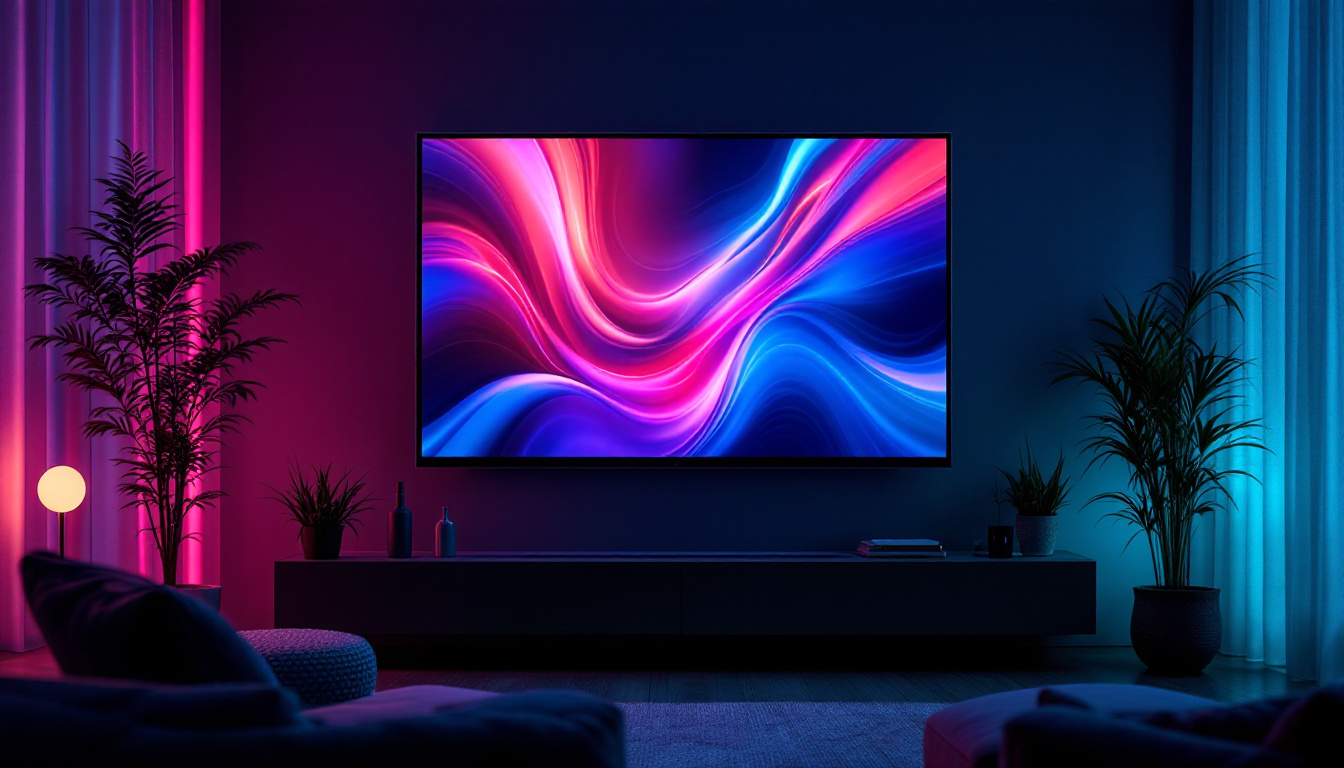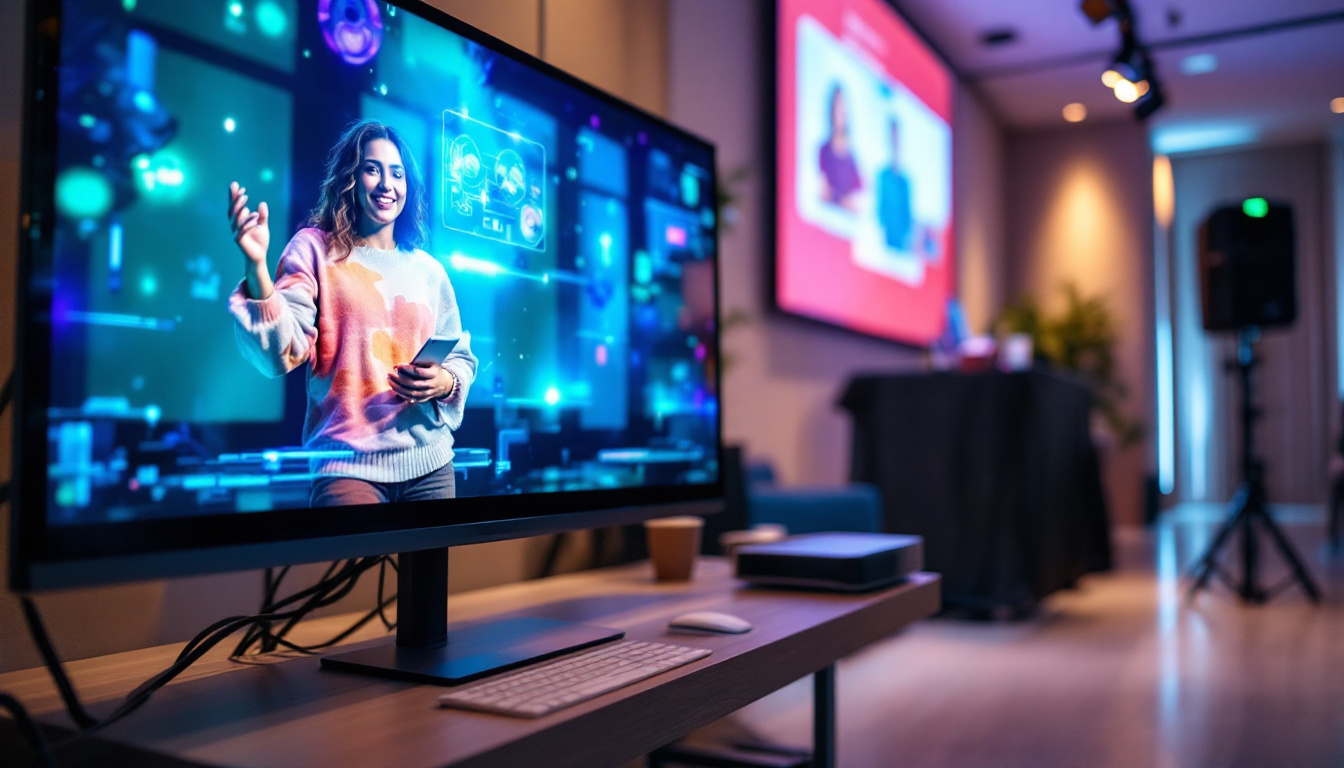In the modern digital age, visual displays have become integral to our daily lives, serving not just as tools for communication but also as canvases for creativity. Among the various types of displays, LED (Light Emitting Diode) technology has emerged as a frontrunner, particularly in the realm of background wallpapers and digital art. This article delves into the intricacies of LED displays, their applications, and how they enhance the aesthetic experience.
Understanding LED Technology
LED technology is based on the principle of electroluminescence, where certain materials emit light when an electric current passes through them. This technology has revolutionized the way images are displayed, providing vibrant colors, sharp contrasts, and energy efficiency. The evolution of LED technology has not only enhanced visual experiences but has also paved the way for innovative applications across various industries, from entertainment to healthcare.
How LED Displays Work
LED displays consist of numerous small diodes that emit light when activated. These diodes are arranged in a grid pattern, with each pixel made up of red, green, and blue (RGB) subpixels. By adjusting the intensity of each subpixel, a wide spectrum of colors can be produced, allowing for high-quality images and videos. This precise control over color and brightness enables LED displays to achieve remarkable color accuracy and consistency, making them a preferred choice for professional applications such as digital signage and broadcasting.
The technology can be categorized into two main types: direct view and backlit displays. Direct view LED displays are composed of individual LEDs that create the image directly, while backlit displays use LEDs to illuminate an LCD panel. Each type has its unique advantages and is suited for different applications. For instance, direct view displays are often used in large outdoor screens, where visibility from various angles and distances is crucial, while backlit displays are commonly found in televisions and computer monitors, providing a balance between performance and cost.
Advantages of LED Displays
LED displays offer several advantages over traditional display technologies, such as LCD and CRT. One of the most significant benefits is their energy efficiency. LEDs consume less power, which not only reduces electricity costs but also contributes to a smaller carbon footprint. This efficiency is particularly beneficial in large installations, such as stadiums or shopping malls, where the cumulative energy savings can be substantial over time.
Additionally, LED displays are known for their brightness and clarity. They can produce vibrant colors and deep blacks, making them ideal for both indoor and outdoor use. Their durability is another noteworthy feature; LED displays are less prone to damage and can withstand harsh environmental conditions. Furthermore, the long lifespan of LED technology—often exceeding 50,000 hours—means that maintenance and replacement costs are significantly lower compared to other display types. This longevity, combined with the ability to operate in a wide range of temperatures, makes LED displays an excellent investment for businesses looking to enhance their visual communication strategies.
Applications of LED Displays
The versatility of LED displays has led to their widespread adoption across various industries. From advertising to entertainment, these displays have transformed the way information is conveyed and experienced.
Advertising and Marketing
In the advertising sector, LED displays have become a staple for billboards and digital signage. Their ability to display dynamic content allows businesses to capture the attention of passersby effectively. Advertisers can change messages in real-time, making it easier to promote sales, events, or new products.
Moreover, the high visibility of LED displays, even in bright sunlight, ensures that advertisements reach a broader audience. This adaptability has made LED technology a preferred choice for marketing campaigns, enhancing brand visibility and engagement. The integration of sensors and data analytics with LED displays also allows advertisers to tailor content based on demographics or time of day, further optimizing their marketing strategies. This level of customization not only increases the relevance of the advertisements but also contributes to higher conversion rates.
Entertainment and Events
In the entertainment industry, LED displays are ubiquitous. Concerts, festivals, and sporting events utilize large LED screens to enhance the audience experience. These displays can show live feeds, graphics, and animations, creating an immersive environment for attendees.
Moreover, the flexibility of LED technology allows for creative stage designs and installations. From intricate light shows to massive video walls, LED displays can be tailored to fit any event’s theme and atmosphere, making them indispensable in modern entertainment. The use of LED technology has also expanded into virtual reality experiences, where displays can create 360-degree environments that transport audiences into different worlds. This innovation not only captivates viewers but also sets new standards for event production, pushing the boundaries of what is possible in live performances.
Art and Creative Installations
Artists and designers have embraced LED technology as a medium for creative expression. digital art installations often use LED displays to create dynamic visuals that change in response to viewer interaction or environmental factors. This fusion of technology and art has led to new forms of storytelling and engagement.
Furthermore, LED displays can serve as background wallpapers in various settings, from homes to corporate offices. They provide a canvas for artists to showcase their work, transforming static spaces into vibrant, living environments. The interactive nature of these displays invites viewers to engage with the artwork on a deeper level, often resulting in a more personal connection to the piece. Additionally, the integration of sound and light can enhance the sensory experience, creating multi-dimensional installations that captivate audiences and inspire dialogue about the intersection of technology and creativity. As artists continue to experiment with this medium, the potential for innovative and thought-provoking installations seems limitless.
LED Displays in Home and Office Settings
As LED technology continues to advance, its integration into home and office environments has become more prevalent. The ability to customize backgrounds and visuals has opened up new possibilities for personal and professional spaces.
Customizable Backgrounds
One of the most appealing aspects of LED displays is their ability to serve as customizable backgrounds. Homeowners can choose from a variety of designs, colors, and themes to create an ambiance that reflects their personality. This flexibility allows for seasonal changes or mood adjustments, enhancing the overall aesthetic of a room.
In office settings, customizable LED displays can serve as motivational tools, displaying inspiring quotes, team achievements, or even calming visuals to reduce stress. This adaptability contributes to a more dynamic and engaging work environment. Furthermore, businesses can utilize LED displays for branding purposes, showcasing their logos or promotional content in a visually striking manner that captures the attention of clients and employees alike. This not only reinforces brand identity but also fosters a sense of pride and belonging among team members.
Integration with Smart Technology
LED displays can easily integrate with smart home systems, allowing users to control lighting, visuals, and even sound through a single interface. This level of integration enhances convenience and streamlines the user experience.
For instance, a smart LED display can automatically adjust its brightness based on the time of day or the amount of natural light in a room. This not only improves visibility but also contributes to energy savings, making it an eco-friendly option. Additionally, these displays can be programmed to sync with other smart devices, such as smart speakers or thermostats, creating a cohesive environment that responds to the user’s needs. Imagine walking into a room where the LED display transitions to a warm, inviting hue as the thermostat adjusts to a comfortable temperature, all triggered by your presence. This seamless interaction not only enhances comfort but also exemplifies the future of interconnected living and working spaces.
The Future of LED Displays
The future of LED displays looks promising, with ongoing advancements in technology and design. As the demand for high-quality visuals continues to grow, manufacturers are constantly innovating to meet consumer expectations.
Emerging Technologies
One of the most exciting developments in LED technology is the advent of microLED displays. These displays utilize tiny micro-sized LEDs to create images, offering even greater resolution and color accuracy than traditional LED displays. MicroLED technology has the potential to revolutionize the market, providing ultra-thin, flexible displays that can be used in a variety of applications.
Additionally, advancements in organic LED (OLED) technology are also worth noting. OLED displays offer superior contrast ratios and color reproduction, making them ideal for high-end applications such as televisions and smartphones. As these technologies continue to evolve, the line between LED and OLED may blur, offering consumers even more options.
Sustainability and Energy Efficiency
As environmental concerns become increasingly important, the LED industry is focusing on sustainability. Manufacturers are working to create displays that are not only energy-efficient but also made from recyclable materials. This shift towards sustainable practices is essential for reducing the overall environmental impact of electronic devices.
Furthermore, innovations in energy-saving technologies, such as adaptive brightness and smart power management, are being integrated into LED displays. These features help reduce power consumption without compromising performance, making LED displays an eco-friendly choice for consumers and businesses alike.
Conclusion
LED displays have transformed the way we experience visuals, from advertising and entertainment to home and office environments. Their versatility, energy efficiency, and vibrant color reproduction make them a preferred choice across various industries.
As technology continues to advance, the future of LED displays promises even greater innovations and applications. Whether used as dynamic advertising tools or customizable backgrounds, LED displays are set to play a significant role in shaping our visual experiences for years to come.
In a world increasingly driven by digital interaction, understanding the capabilities and potential of LED technology is essential for anyone looking to enhance their visual environment. The integration of LED displays into everyday life not only elevates aesthetics but also fosters creativity and engagement, making them an indispensable part of modern technology.
Discover LumenMatrix LED Display Solutions
Ready to elevate your visual experience with the latest in LED technology? Look no further than LumenMatrix, a pioneer in innovative LED display solutions. From captivating Indoor and Outdoor LED Wall Displays to dynamic Vehicle and Sports LED Displays, LumenMatrix offers a wide range of products designed to enhance brand visibility and engage your audience. Whether you’re looking for a Custom LED Display, an All-in-One solution, or the stunning clarity of a Transparent LED Display, LumenMatrix has the expertise to bring your vision to life. Check out LumenMatrix LED Display Solutions today and transform your space into a vibrant canvas of creativity and communication.


